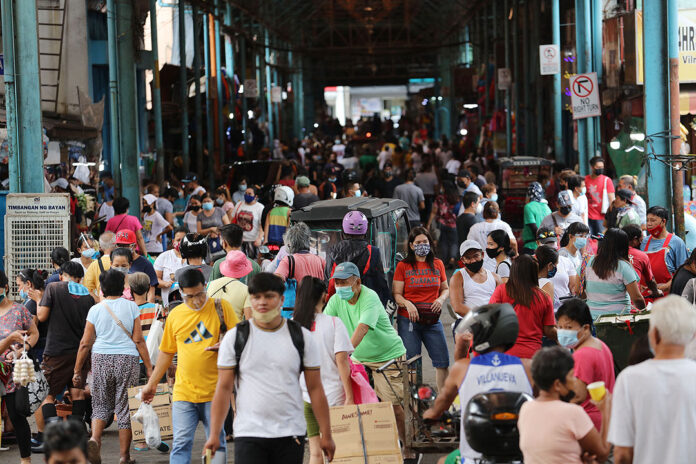PRESIDENT Rodrigo R. Duterte has approved a plan to use for the entire country a coronavirus alert level system first tested in the Philippine capital and nearby cities.
The nationwide enforcement of the quarantine strategy will be in four phases, according to Executive Order 151 released on Thursday.
The first phase will cover Metro Manila, Central Luzon, the Calabarzon, Central Visayas and Davao regions, while the second phase will expand it to Ilocos, Eastern Visayas and Northern Mindanao.
The third phase will cover Cagayan, Bicol and Zamboanga Peninsula, while the last phase will extend it to the Cordillera Administrative Region, Mimaropa, Caraga and Bangsamoro regions.
The first phase has started, while the second phase may begin by the end of November, according to the order.
Succeeding phases will begin every week thereafter until the alert level system is fully enforced nationwide.
The government on Sept. 16 started enforcing granular lockdowns with five alert levels in Metro Manila, weeks after the government struggled to contain a fresh surge coronavirus infections triggered by a more contagious Del-ta variant.
Coronavirus cases in the capital region might soon plateau as the infection rate dropped to 3%, according to the OCTA Research Group from the University of the Philippines.
“We are still seeing good numbers, a very good positivity rate of 3% in the National Capital Region, OCTA fellow Fredegusto P. David told an online forum on Thursday. “We are at a point where cases might reach a plateau or decrease further.”
Metro Manila’s positivity rate meets the World Health Organization’s standards.
Metro Manila had a daily average of 405 infections from Nov. 1 to 7, lower than 501 a year earlier, Mr. David said. The region’s seven-day average stood at 365.
Metro Manila’s virus reproduction rate was 0.37 from Nov. 1 to 7, lower than the critical cut-off of 1.4 and 0.78 posted a year earlier. Its daily attack rate fell to 2.6 for 100,000 people from 0.78 a year ago.
The Department of Health (DoH) reported 1,974 coronavirus infections on Thursday, bringing the total to 2.8 million.
The death toll rose to 44,866 after 142 more patients died, while recoveries increased by 2.388 to 2.7 million, it said in a bulletin.
There were 29,115 active cases, 62.1% of which were mild, 5.9% did not show symptoms, 10.4% were severe, 17.15% were moderate and 4.4% were critical.
The agency said 37 duplicates had been removed from the tally, 33 of which were recoveries, while 104 recoveries were relisted as deaths. Two laboratories failed to submit data on Nov. 9.
The Philippines injected more than a million doses of coronavirus vaccines on Wednesday, presidential spokesman Herminio L. Roque, Jr. told a televised news briefing.
He said 66.8 million doses of coronavirus vaccines had been given out as of Nov. 10. Almost 30.5 million people or 39.51% of adult Filipinos have been fully vaccinated against the virus, he added.
In the capital region, 91% or 8.9 of its 9.8 million residents have been fully vaccinated against the coronavirus, Mr. Roque said.
The government will tap as many as 200,000 vaccinators for its three-day vaccination campaign, Kezia Lorraine Rosario, a member of the government’s COVID-19 vaccination center, told the briefing.
At least 11,000 vaccination sites would be tapped for the program from Nov. 29 to Dec. 1. Walk-ins will be allowed at inoculation sites, she said. — Kyle Aristophere T. Atienza

